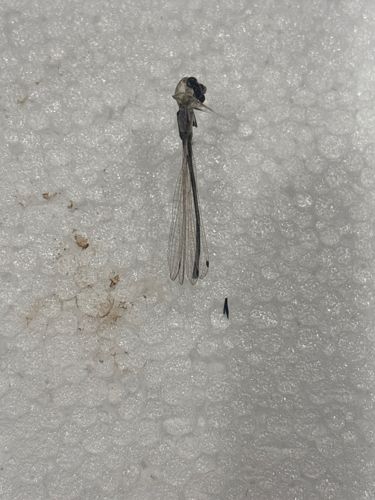Damselfly
Scientific Name: Zygoptera spp.
Order & Family: Odonata, various families (e.g., Coenagrionidae, Lestidae, Calopterygidae)
Size: Typically 19-50 mm (0.75-2 inches) in length, with a wingspan of 25-75 mm (1-3 inches).

Natural Habitat
Found near freshwater bodies such as ponds, lakes, rivers, and streams; often in vegetated areas along the water's edge.
Diet & Feeding
Predatory insects, both as nymphs (naiads) and adults. Nymphs feed on aquatic invertebrates like mosquito larvae, small crustaceans, and other insect larvae. Adults primarily prey on small flying insects such as mosquitoes, gnats, flies, and small moths, caught in flight.
Behavior Patterns
Damselflies are characterized by their slender bodies and wings that are held together over their backs when at rest (unlike dragonflies which hold them out). They undergo incomplete metamorphosis, with aquatic naiads developing into terrestrial adults. Adults are active hunters during the day, often seen flying gracefully near water. Males are typically territorial and display elaborate courtship rituals to attract females.
Risks & Benefits
Damselflies pose no known risks to humans. They are highly beneficial insects as both nymphs and adults are effective predators of nuisance insects like mosquitoes and gnats, helping to control their populations. They also serve as an important food source for fish, birds, and other wildlife, contributing to the aquatic and terrestrial food web.
Identified on: 9/19/2025